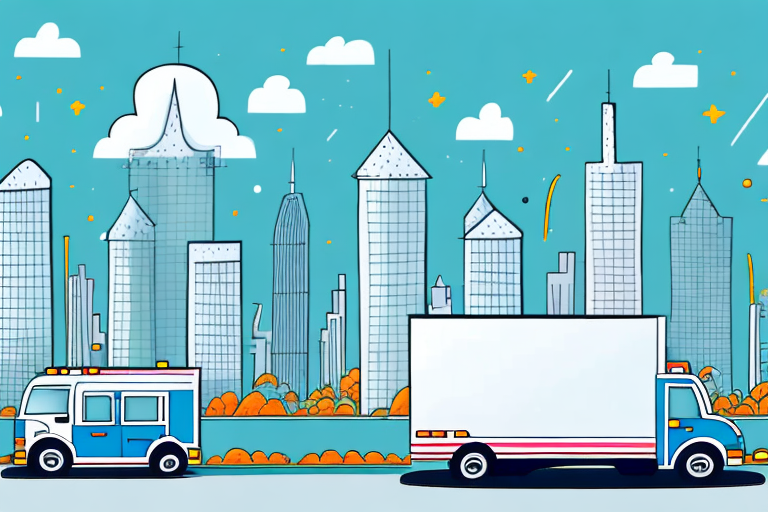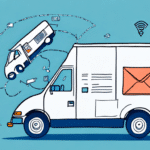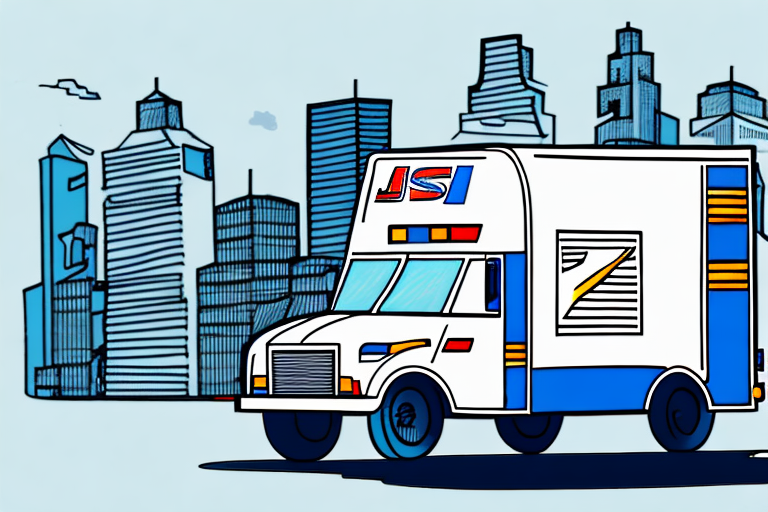Exploring the Innovations of the United States Postal Service
The United States Postal Service (USPS) is a colossal organization responsible for the delivery of mail and packages across the country and the world. Established in 1775, the USPS has undergone significant transformations, adapting to technological advancements and societal shifts. Today, the USPS continues to evolve, introducing new innovations to meet the challenges of the modern era. This article delves into the history, challenges, and innovations of the USPS to provide a comprehensive understanding of this critical organization.
The History of the USPS and Its Role in American Society
The USPS has been a cornerstone of American society since its inception. In its early years, the postal service served as a vital means of communication between the colonies, facilitating the exchange of news and information. By the 19th century, the USPS had become an integral part of American culture, delivering mail and packages to citizens across the nation.
One of the most significant milestones in USPS history was the introduction of the ZIP code system in 1963. This innovation allowed for more efficient sorting and delivery of mail, significantly reducing the time it took for letters and packages to reach their destinations. The USPS also played a crucial role in the expansion of the American West, establishing new post offices and mail routes that connected remote communities to the rest of the country.
Today, the USPS remains an essential service provider, delivering mail, packages, and vital items such as medication to homes and businesses nationwide. Despite facing challenges in recent years, including financial difficulties and increased competition from private delivery services, the USPS's commitment to providing affordable and reliable mail services continues to connect communities across the country. For a detailed history, visit the USPS History Page.
The Challenges Faced by the USPS in the Digital Age
The rise of digital technology has presented numerous challenges for the USPS. With the advent of email and digital communication, traditional mail has seen a significant decline in volume, reducing the USPS's primary source of revenue. Additionally, the surge in e-commerce has created new demands for package delivery, pressuring the USPS to modernize its systems and procedures to keep up with the increased volume.
Decline in Mail Volume
As more individuals and businesses shift to digital communication, the USPS has experienced a steady decline in mail volume. In 2022, first-class mail volume decreased by approximately 4%, leading to a substantial reduction in revenue. To address this, the USPS has implemented cost-cutting measures and explored new revenue streams, such as expanding shipping and printing services.
Surge in E-commerce
The exponential growth of e-commerce has both challenged and benefited the USPS. While the increase in package delivery has provided a new revenue stream, it has also strained the USPS's infrastructure. The organization has responded by investing in automated sorting machines and expanding its delivery networks to handle the heightened demand efficiently.
For comprehensive insights into the challenges faced by the USPS, refer to the USPS Office of Inspector General Report.
How the USPS Has Adapted to Modern Technology
The USPS has embraced modern technology to enhance its operations and improve service delivery. Recent investments include new sorting equipment, advanced delivery vehicles, and mobile devices for postal workers, all aimed at increasing efficiency and productivity.
Digital Tools and Services
One notable innovation is Informed Delivery, a digital service that provides consumers with previews of incoming mail and packages. This service enhances customer experience by allowing recipients to track their mail digitally before it arrives. Additionally, the USPS has implemented a robust package tracking system, enabling real-time tracking through the USPS website and mobile app.
Automation and Robotics
Automation and robotics have revolutionized the USPS's processing facilities. Automated sorting machines have increased the speed and accuracy of mail sorting, reducing errors and delays. Furthermore, the USPS is experimenting with drone technology for package deliveries in remote areas, potentially transforming the future of mail delivery.
Learn more about USPS technological advancements on their Technology and Innovation Page.
Innovations in Postal Delivery: From Drones to Robots
The USPS is at the forefront of exploring new delivery methods, such as drones and robots, to enhance the efficiency and speed of package delivery. These technologies promise to revolutionize the way the USPS operates, making the organization more competitive in the burgeoning e-commerce market.
Drones for Remote Deliveries
Drones offer the potential to deliver packages to remote and hard-to-reach locations more quickly and efficiently than traditional methods. By operating 24/7 without the need for breaks, drones can ensure faster delivery times and reduce operational costs.
Robotic Assistance
Robots are being integrated into USPS facilities to assist with sorting and delivery tasks. These robots can handle high volumes of mail and packages with precision, minimizing human error and increasing overall throughput.
Environmental Benefits
Both drones and robots contribute to reducing the USPS's carbon footprint. These technologies are generally more energy-efficient compared to traditional delivery vehicles, aligning with the USPS's sustainability goals.
For more information on USPS innovations, visit the USPS Innovation Page.
The Environmental Impact of Postal Delivery and How the USPS is Addressing It
The USPS is committed to minimizing its environmental impact through various sustainable initiatives. These efforts are aimed at reducing greenhouse gas emissions, conserving energy, and promoting recycling within its operations.
Alternative Fuel Vehicles
The USPS has invested in alternative fuel vehicles, including electric and hybrid trucks, to reduce reliance on fossil fuels. By transitioning to greener vehicles, the USPS aims to lower its carbon emissions and operational costs.
Recycling and Waste Reduction
Recycling programs have been implemented across USPS facilities to manage waste more effectively. Initiatives such as recycling paper and packaging materials help decrease the organization's environmental footprint.
BlueEarth Program
The BlueEarth program focuses on reducing waste and increasing energy efficiency in USPS facilities. Measures include installing energy-efficient lighting and HVAC systems, using recycled materials in construction, and implementing water conservation practices.
Partnerships for Sustainability
The USPS collaborates with organizations like the Environmental Protection Agency (EPA) to develop and implement sustainable practices throughout its operations. These partnerships ensure that USPS's environmental initiatives are both effective and aligned with national standards.
Discover more about USPS's environmental initiatives on the BlueEarth Page.
The Future of Postal Service: Predictions and Possibilities
The future of the USPS is poised for significant advancements, driven by technological innovations and evolving market demands. Emerging technologies such as artificial intelligence and smart logistics are set to further enhance USPS operations and customer experience.
Artificial Intelligence and Smart Logistics
Artificial intelligence (AI) can optimize delivery routes, predict package volumes, and enhance customer service through chatbots and automated responses. Smart logistics systems will enable the USPS to manage resources more effectively, ensuring timely and accurate deliveries.
Leadership in E-commerce
With the continuous growth of e-commerce, the USPS has the potential to become a leading player in the market. Leveraging its extensive delivery network and embracing innovative delivery solutions will position the USPS as a preferred choice for online retailers and consumers alike.
Sustainability and Green Initiatives
Future sustainability efforts will focus on further reducing the USPS's carbon footprint. Investments in electric vehicles, alternative fuels, and energy-efficient infrastructure will be pivotal in achieving long-term environmental goals.
For insights into the future plans of the USPS, refer to their Postal Future Page.
The Importance of Postal Service in Rural Areas and How the USPS is Serving Them
The USPS plays a crucial role in rural areas, providing essential mail and package delivery services to communities that might otherwise be underserved. Recognizing the unique challenges faced by rural regions, the USPS has introduced several initiatives to enhance service delivery in these areas.
Cluster Mailbox Units
Cluster mailbox units allow residents in rural communities to receive mail and packages at a centralized location. This system improves efficiency and ensures that residents have reliable access to postal services, even in areas with low population density.
Challenges in Rural Delivery
Serving vast distances between homes and businesses presents significant logistical challenges. Longer delivery routes increase operational costs and delivery times. Additionally, limited internet access in many rural areas hinders the ability of residents to track packages and receive timely notifications.
Innovative Solutions
To overcome these challenges, the USPS is exploring innovative delivery methods, such as the use of drones and autonomous vehicles, to reach remote areas more effectively. Additionally, partnerships with local businesses and community centers help facilitate package pickups and deliveries.
Learn more about USPS rural initiatives on the Rural Delivery Page.
The Economic Impact of the USPS on American Businesses and Consumers
The USPS has a substantial economic impact on American businesses and consumers by providing affordable shipping rates and vital delivery services. Its role extends beyond mail delivery, supporting various industries and contributing to the overall economic health of the nation.
Support for Businesses
The USPS offers cost-effective shipping solutions that enable businesses of all sizes to reach customers both nationally and internationally. Affordable rates and reliable delivery services are crucial for small businesses and startups looking to expand their market presence.
Employment and Economic Stability
With over 600,000 employees, the USPS is one of the largest employers in the United States. These jobs provide stable incomes and benefits, supporting local economies and fostering economic stability across communities.
Contracting with Small Businesses
The USPS collaborates with numerous small businesses for services such as printing, logistics, and transportation. These partnerships create additional economic opportunities and promote entrepreneurship within local markets.
Contribution to the E-commerce Boom
As a key player in the e-commerce sector, the USPS facilitates the rapid growth of online retail by ensuring timely and efficient package deliveries. This contribution has been instrumental in driving innovation and growth across various industries.
Explore the economic contributions of the USPS on the Economic Impact Page.
The Role of the USPS in National Security and Disaster Response
The USPS plays a pivotal role in national security and disaster response by leveraging its infrastructure and resources to deliver essential supplies and support during emergencies.
Disaster Response and Relief
In the event of natural disasters or emergencies, the USPS deploys resources to deliver critical supplies such as medications, food, and relief materials to affected areas. Its extensive network allows for rapid response and effective distribution of aid.
National Security Operations
The USPS collaborates with law enforcement agencies to prevent terrorist threats and protect American citizens. The Postal Inspection Service, USPS's law enforcement arm, investigates crimes related to the mail and works to prevent fraud and other illegal activities.
Mail-in Ballot Delivery
During elections, the USPS is responsible for the secure and timely delivery of mail-in ballots. This function is crucial for safeguarding the integrity of the democratic process by ensuring that ballots are delivered and returned without tampering.
Communication Services in Crisis
During crises, USPS mail carriers often serve as the only regular visitors to remote or rural areas, providing a vital line of communication and support for residents. Additionally, the USPS has a history of supporting military personnel stationed overseas by maintaining communication channels with their families.
For more information on USPS's role in national security and disaster response, visit the Postal Inspection Service Page.
Conclusion
The USPS has a rich history and a promising future, marked by continuous innovations and adaptations to meet the evolving needs of society. By embracing modern technology, addressing environmental concerns, and expanding its services, the USPS remains an indispensable part of American life. As challenges persist, the USPS's dedication to providing reliable and affordable services ensures that it will continue to play a vital role in connecting communities and supporting the nation's economic and social infrastructure.




















